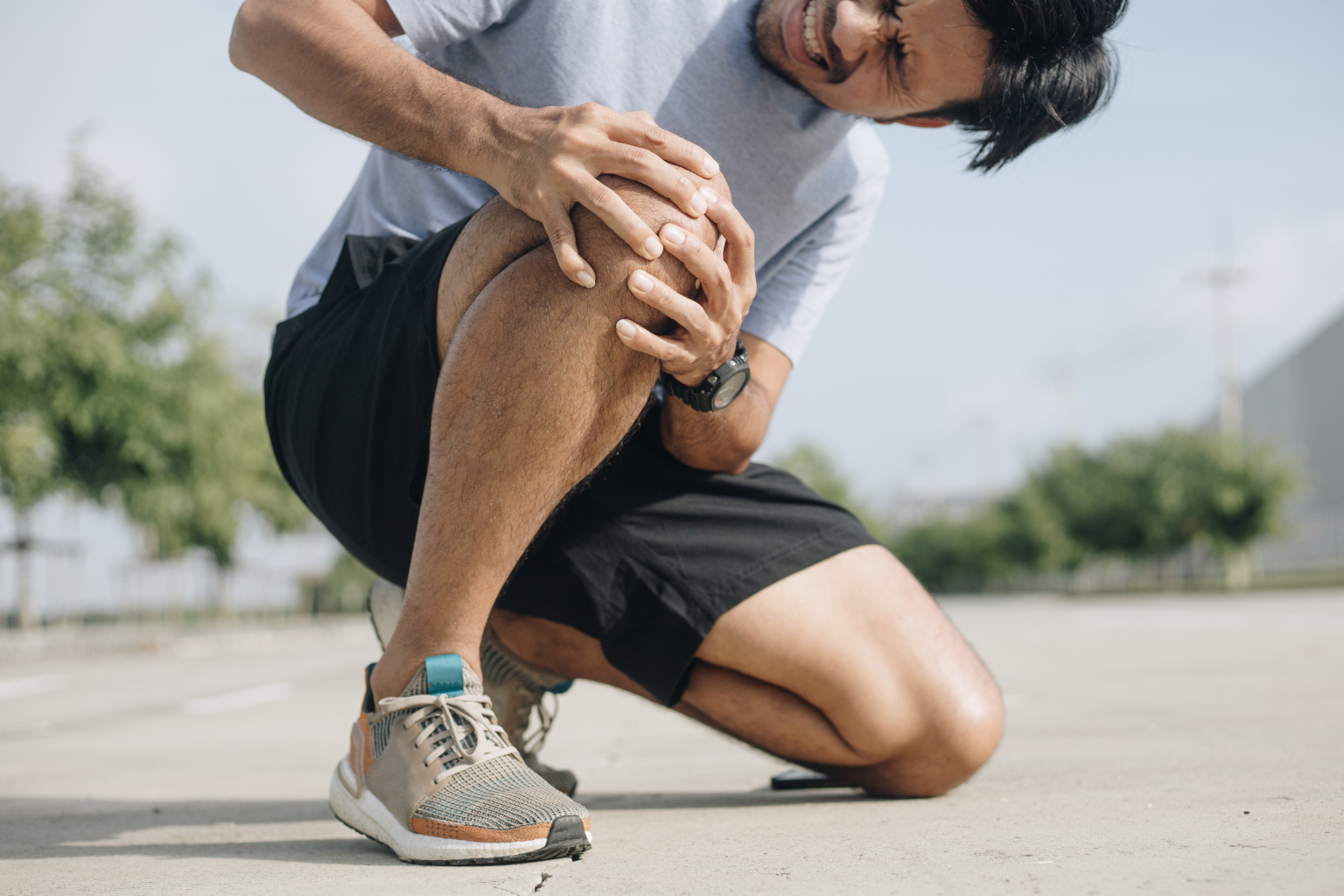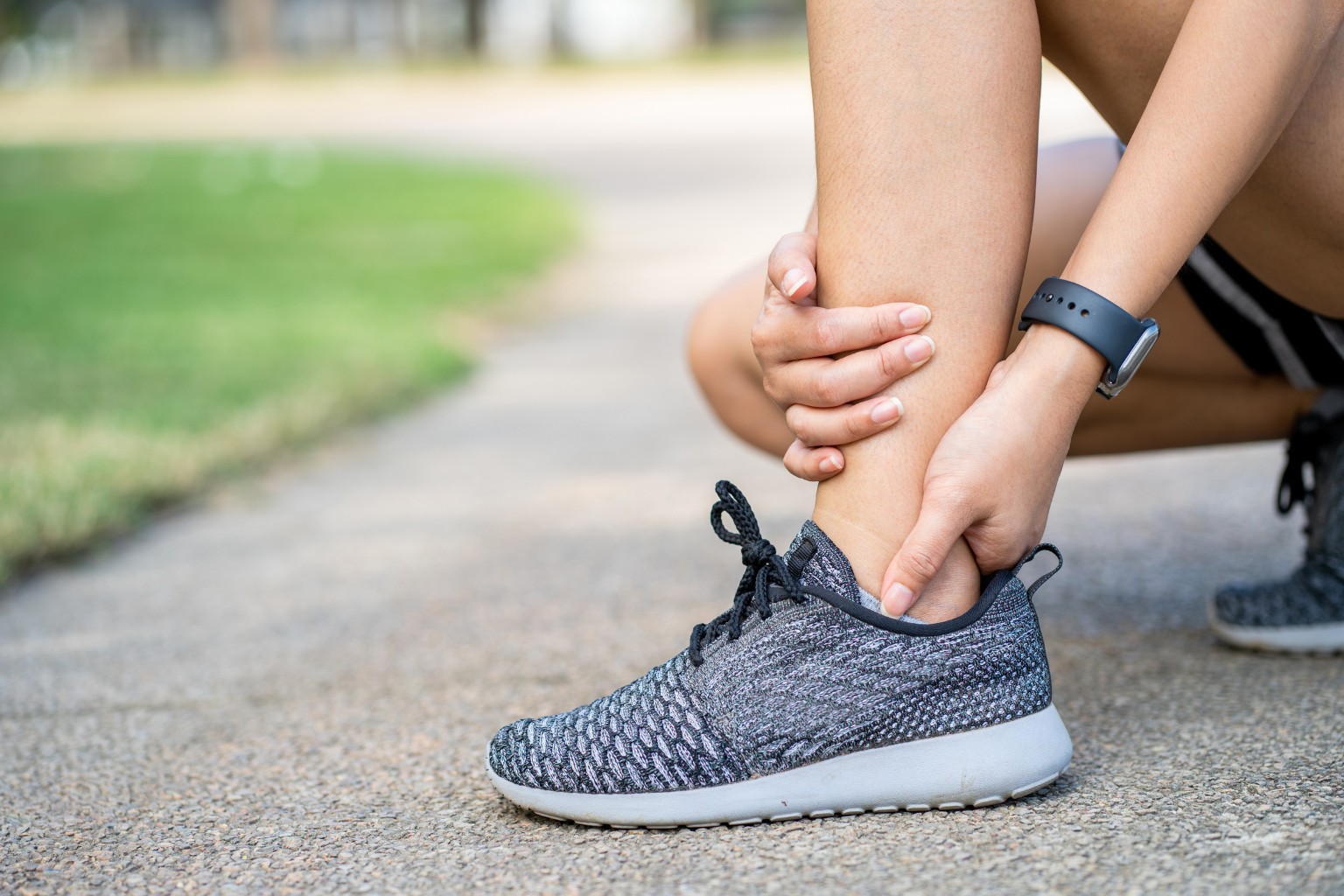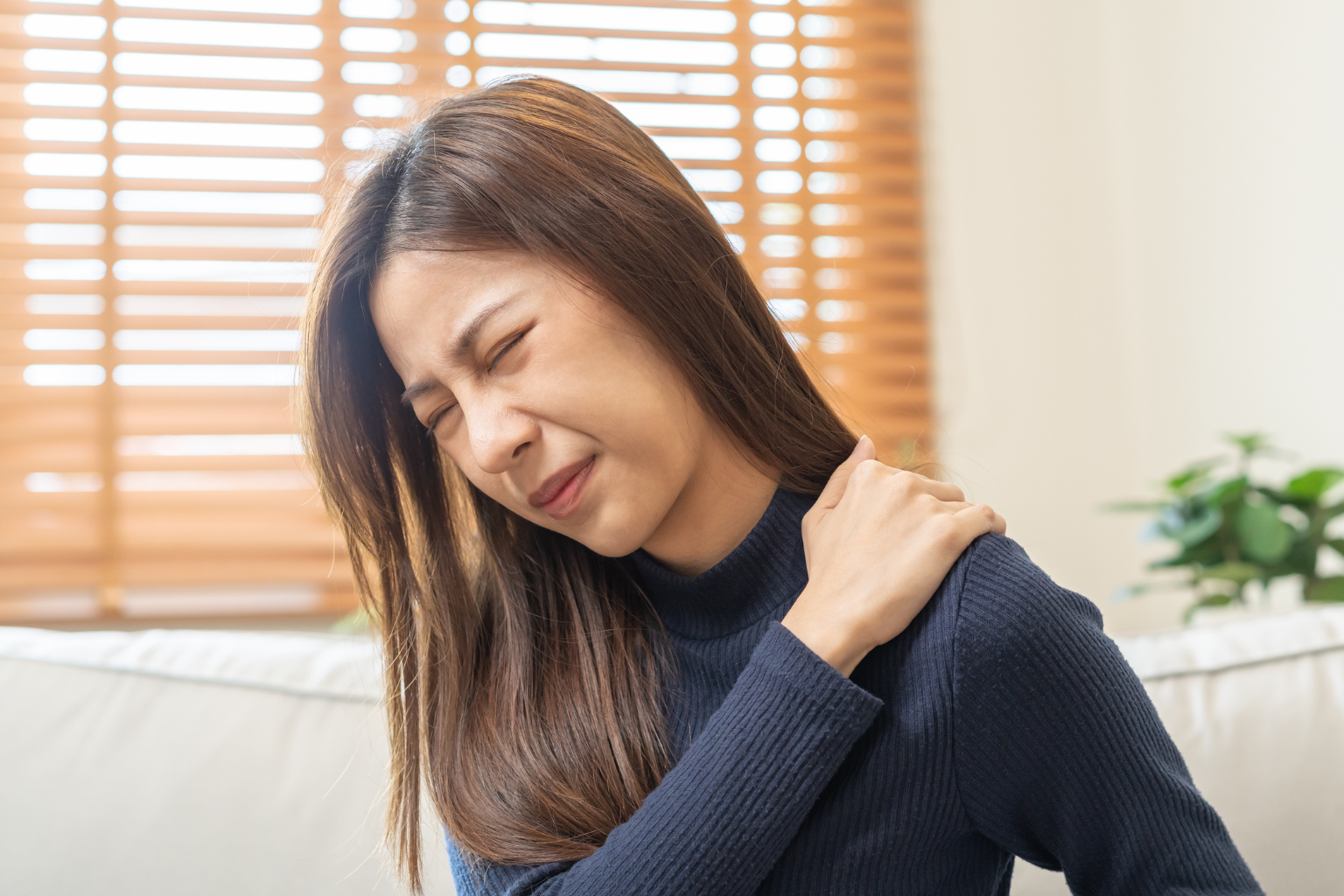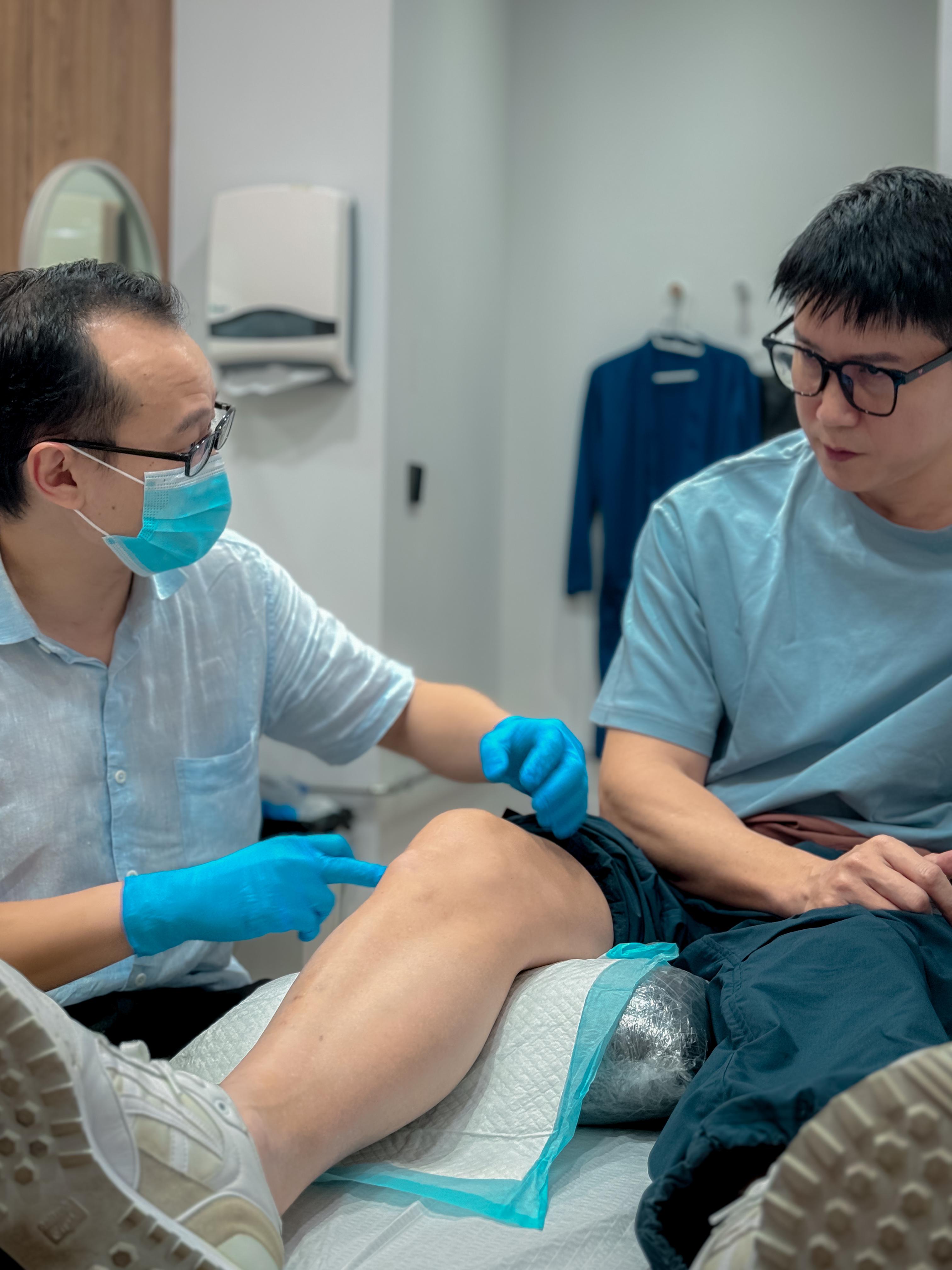BRANDED CONTENT
From tennis elbow to ACL tears: The top five most common sports injuries and how to treat them
Whether you are a weekend warrior or a pro athlete, these injuries can happen to anyone and it’s important to treat them holistically, says orthopaedic surgeon Puah Ken Lee

Some common sports injuries include anterior cruciate ligament tears and ankle sprains. PHOTO: ADOBE STOCK
Follow topic:
Not all sports injuries come from dramatic falls or a sudden twist of a limb. And this may come as a surprise to many, but you do not have to be a professional athlete to experience one either – injuries can happen to anyone, says Dr Puah Ken Lee, a consultant orthopaedic surgeon at Artisan Sports & Orthopaedic Clinic.
“Whether you are an athlete or a recreational sports enthusiast, everyone is prone to having sports injuries without proper conditioning, such as strengthening core muscles or stretching,” he adds.
And when it comes to sports injuries, age is but a number. “Those who are between the ages of 15 and 45 have a higher chance of facing anterior cruciate ligament (ACL) tears, whereas ankle sprains and shoulder dislocations can happen at any age,” notes Dr Puah.
“Older sports players tend to deal with overuse injuries, like rotator cuff tears or tennis and golfer’s elbow.”
Here are the top five most common sports injuries, according to Dr Puah, and the possible treatment options.
Anterior cruciate ligament (ACL) tear
The ACL is a ligament located in the centre of your knee that connects your thigh bone to your shin bone. Its job is to keep your shin bone from shifting out of place and help you maintain stability as you move. An ACL injury can restrict your movement and reduce the stability of your knee.
What causes an ACL tear
Participating in sports such as basketball, floorball, football, hockey, netball and squash may put you at a higher risk – “basically, any sport that involves rapid changes in direction while running or jumping”, says Dr Puah. “I usually notice more ACL injuries at the end of the year as well, since more Singaporeans are taking up winter sports like snowboarding and skiing.”
Dr Puah adds that ACL tears happen more frequently to women due to the differences in knee anatomy between females and males.
“Other contributing factors include hormonal changes because of menstruation, which affects ligament laxity, and a tendency for females to land with the knee turned inwards when jumping,” he says.
Symptoms of ACL tears
You might hear a loud “pop” or “snap” the moment the injury occurs. After that, the knee will start to swell and become painful, making it difficult to perform basic movements such as walking or running. Additionally, you may experience a general feeling of instability, with your knee seeming to “give way” or buckle unexpectedly.
Treatment options for ACL tears
According to Dr Puah, it will depend on the severity of the injury. “It ranges from rehabilitation, to wearing a knee brace to reduce the movement of the joint. For more severe cases, knee arthroscopy surgery may be administered,” he says.
How to prevent ACL tears
Doing a proper warm-up routine before you start exercising is crucial. Dr Puah also advises working on strengthening your core muscles and assessing your landing patterns when playing sports. For example, you should avoid your knees buckling inwards when landing after jumping or pivoting.
Ankle sprain
An ankle sprain occurs when the ligaments that support the ankle stretch beyond their limits or tear.
What causes an ankle sprain
This injury typically happens when you twist or turn your ankle in an awkward way, often by stepping unevenly or during ball sports such as basketball and football.
“Ankle sprains can happen with rapid changes in direction, running with sudden stops and jumping,” says Dr Puah.
Symptoms of ankle sprains
Apart from pain and discomfort, you may experience swelling or tenderness around the ankle, which can lead to difficulty in maintaining your balance when standing or walking. The affected ankle may also feel loose or unstable.

Treatment options for ankle sprains
“To manage the pain and swelling in the early stages, we may provide medication. Other options include physiotherapy and wearing a brace to restrict movement. For patients with recurrent ankle sprains, surgery, such as an ankle arthroscopy or ankle ligament construction, may be necessary,” says Dr Puah.
How to prevent ankle sprains
Do exercises to improve balance, such as lunges and squats, along with stretching out the calves. Proper footwear is also important to ensure that your feet have sufficient support, advises Dr Puah.
Select the right kind of sports shoes depending on your activity. For example, shoes designed for ball games offer added stability and traction to withstand high-intensity movements, unlike those specifically made for running.
“Minor injuries such as ankle sprains could represent an underlying problem with tight muscles or poor form. If left untreated, this may result in more serious injuries in the future,” he adds.
Shoulder dislocation
A shoulder dislocation occurs when the ball-like structure at the top of your upper arm bone pops out of the socket in your shoulder blade.
What causes a shoulder dislocation
Shoulder dislocations can happen from a fall or a sudden, forceful movement. The dislocation causes immediate pain and makes it difficult to move your arm until the shoulder is put back into place.
According to Dr Puah, this injury is common in overhead and contact sports after a fall or collision with an opposing player. Some types of sports that may cause this injury include basketball, rugby, tennis and badminton.
Symptoms of shoulder dislocation
You might notice your shoulder joint popping or locking, which can make it feel like it is stuck in a certain position. You may also experience muscle weakness in the affected shoulder, making it harder to perform everyday tasks that involve arm movement.
Treatment options for shoulder dislocations
“Physiotherapy, which involves the use of gentle exercises to improve muscle strength and shoulder stability, is an option for less severe cases. For more serious injuries or repeated dislocations, surgery may be recommended,” says Dr Puah.
How to prevent shoulder dislocations
Dr Puah advises working on strengthening your core muscles and learning the correct techniques for sports that involve throwing. For example, when serving in tennis, you should rotate your hip and shoulder as well, instead of relying only on your shoulder and elbow.
Rotator cuff tear
The rotator cuff helps move and stabilise the shoulder joint, allowing you to lift and rotate your arm. When a rotator cuff tear occurs, there is damage on the group of muscles and tendons that surrounds the shoulder joint.
What causes a rotator cuff tear
Rotator cuff tears may result when a person falls onto an outstretched hand, which could happen in sports such as tennis, badminton, weight training and skiing.
Dr Puah says rotator cuff tears are also common among those above the age of 40 who perform overhead exercises such as tennis, badminton and shoulder presses in the gym.

Symptoms of rotator cuff tears
A fall typically results in immediate and intense shoulder pain, whereas degenerative tears from wear and tear lead to pain that gradually worsens over time.
You might experience muscle weakness in the shoulder that can prevent you from lifting or gripping objects. Besides a limited range of motion, Dr Puah says it is also common to hear a cracking or popping sound when moving your arm.
Treatment options for rotator cuff tears
A torn rotator cuff will not heal on its own. So, depending on the severity of the injury, Dr Puah recommends physiotherapy to help strengthen the muscles and tendons. If there is no improvement, he may recommend ultrasound-guided injections or shoulder arthroscopy surgery which help to repair the torn rotator cuff.
How to prevent rotator cuff tears
Dr Puah advises doing a proper warm-up routine and learning the right throwing technique and posture.
Tennis or golfer’s elbow
These injuries affect the tendons connecting the muscles to the bone at the elbow. Tennis elbow causes pain on the outside of the elbow when lifting or bending your arm, while golfer’s elbow causes pain on the inside when making a fist or twisting your arm.
What causes a tennis or golfer’s elbow
Tennis elbow and golfer’s elbow occur from repetitive motion of the arm and wrist. However, Dr Puah points out that these injuries are not exclusive to tennis or golf players. He notices that as more Singaporeans take up racquet sports, such as padel, similar injuries can result when there is a lack of proper technique.
Symptoms of tennis or golfer’s elbow
If you are experiencing tennis elbow, you may feel pain when bending or extending your arm or your wrist, or when gripping objects. The area around the elbow may also appear swollen.
As for golfer’s elbow, you may feel pain in the elbow when bending or twisting your wrist, or when lifting things, regardless of weight. The elbow will also be sensitive to touch, and you may experience the occasional locked or stiff elbow.
Treatment options for tennis or golfer’s elbow
Depending on the severity of the injury, Dr Puah may recommend different options ranging from physiotherapy to wearing a brace to keep the arm in place while it heals, and extra-corporeal shockwave therapy, a non-invasive treatment that uses high-energy acoustic waves to stimulate the body’s natural healing process.
Platelet-rich plasma injections are another option that uses a concentrated form of plasma from your own blood to help repair injuries, and for more severe cases, elbow arthroscopy surgery may be recommended.
How to prevent tennis or golfer’s elbow?
It is important to learn the proper technique for the sport. For example, when performing a backhand in tennis, rotate your arm and body instead of relying solely on your forearm muscles. Dr Puah also suggests engaging a trainer for sports-specific conditioning.
At Artisan Sports & Orthopaedic Clinic, preparation for an injured individual to return to the sport begins at the first consultation, with assessment, diagnosis and goal setting to establish rehabilitation targets,” he says.

In cases of severe injury, Dr Puah takes his patients’ level of health, sports participation and personal fitness goals into consideration. For patients who are professional athletes, he also factors in the timing of the athlete’s season and their career stage to determine the best time for surgery.
“We work with external physiotherapy, occupational therapy and podiatry partners who share a common goal in getting our patients back in the game.
“The clinic ensures that each treatment plan is tailored to the individual’s needs and recovery goals,” he adds.
For more information, visit Artisan Sports & Orthopaedic Clinic.


